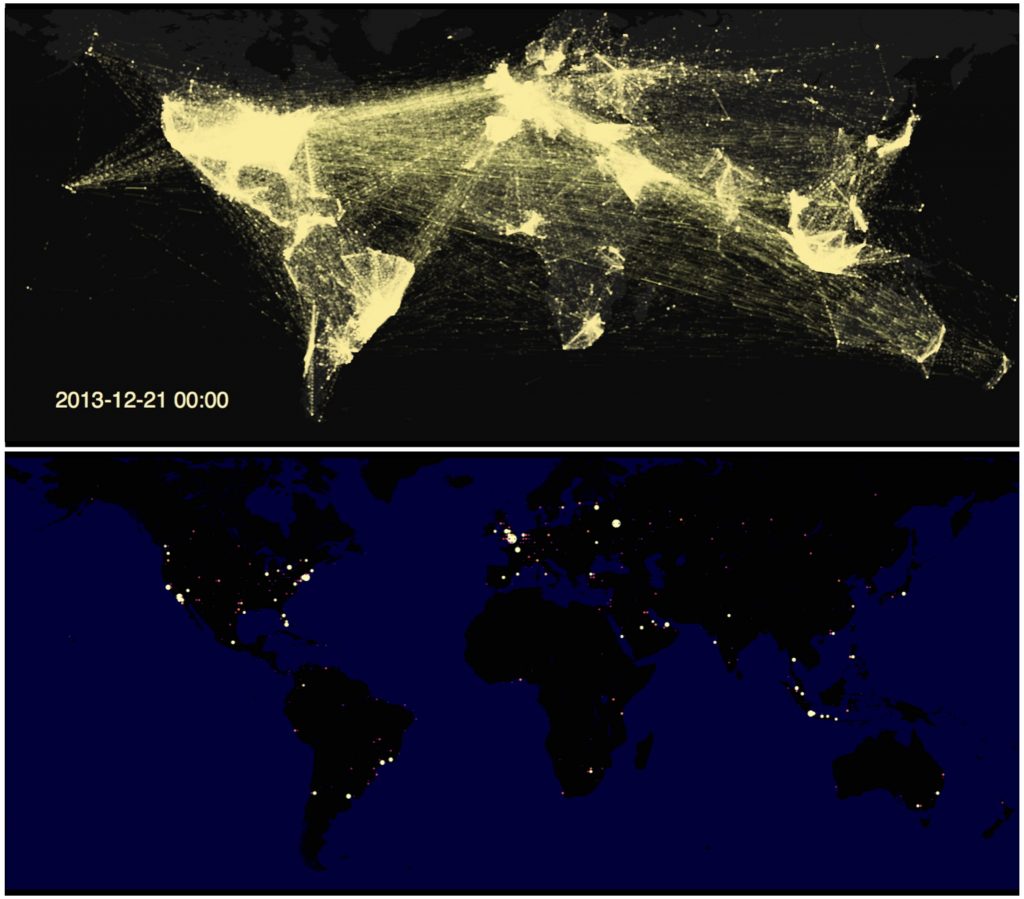From the Journal: Chaos
WASHINGTON, July 21, 2020 — Twitter mentions show distinct community structure patterns resulting from communication preferences of individuals affected by physical distance between users and commonalities, such as shared language and history.
While previous investigations have identified patterns using other data, such as mobile phone usage and Facebook friend connections, research from the New England Complex Systems Institute looks at the collective effect of message transfer in the global community. The group’s results are reported in an article in the journal Chaos, by AIP Publishing.

The scientists used the mentions mechanism in Twitter data to map the flow of information around the world. A mention in Twitter occurs when a user explicitly includes another @username in their tweet. This is a way to directly communicate with another user but is also a way to retransmit or retweet content.
VIDEO: https://www.youtube.com/watch?v=MUTFGt2tYbE
The investigators examined Twitter data from December 2013 and divided the world into 8,000 cells, each approximately 100 kilometers wide. A network was built on this lattice, where each node is a precise location and a link, or edge, is the number of Twitter users in one location who are mentioned in another location.
Twitter is banned in several countries and is known to be more prevalent in countries with higher gross domestic product, so this affects the data. Their results show large regions, such as the U.S. and Europe, are strongly connected inside each region, but they are also weakly connected to other areas.
“While strong ties keep groups cohesive, weak ties integrate groups at the large scale and are responsible for the spread of information systemwide,” said co-author Leila Hedayatifar.
The researchers used a computational technique to determine modularity, a value that quantifies distance between communities on a network compared to a random arrangement. They also investigated a quantity known as betweenness centrality, which measures the number of shortest paths through each node. This measure highlights the locations that serve as connectors between many places.
By optimizing the modularity, the investigators found 16 significant global communities. Three large communities exist in the Americas: an English-speaking region, Central and South American countries, and Brazil in its own group. Multiple communities exist in Europe, Asia and Africa.
The data can also be analyzed on a finer scale, revealing subcommunities. Strong regional associations exist within countries or even cities. Istanbul, for example, has Twitter conversations that are largely restricted to certain zones within the city.
The investigators also looked at the effect of common languages, borders and shared history.
“We found, perhaps surprisingly, that countries who had a common colonizer have a decreased preference of interaction,” Hedayatifar said.
She suggests hierarchical interactions with the colonizing country might inhibit interactions between former colonies.
###
For more information:
Larry Frum
media@aip.org
301-209-3090
Article Title
Geographical fragmentation of the global network of Twitter communications
